News Articles
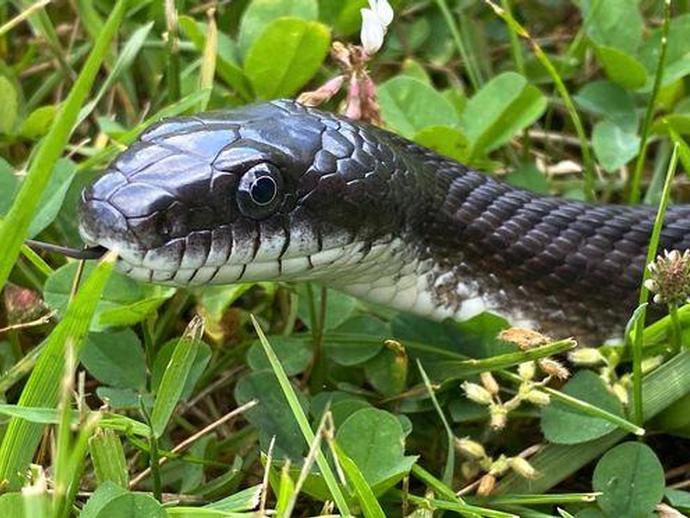
Ben here with the Monday edition of #BenInNature presented by our friends at Carter Bank & Trust!
May 31, 2021
Ben here with the Monday edition of #BenInNature presented by our friends at Carter Bank & Trust! There are few phrases I dislike more than "the only good snake is a dead snake." Just look at this eastern rat snake (Pantherophis alleghaniensis)! Look at its big eyes and adorable little tongue! How could anyone hate this guy? The eastern rat snake can be found throughout much of the eastern portion of the U.S., and it's the snake you're most likely to encounter here in Virginia. They can be found in a wide variety of habitats, and they're also strong climbers, meaning you might even spot them up in a tree. The juveniles tend to eat insects and small reptiles and amphibians, while the adults eat rodents, birds, and their ...
A very limited number of spaces remain available for the museum's JR
May 31, 2021
A very limited number of spaces remain available for the museum's JR. NATURALISTS Summer Adventure Camp for ages 9-11 taking place June 14-18 from 9 a.m. to 4 p.m.! During this camp, participants are encouraged to explore their natural curiosity for the environment! Camp activities include nature exploration, games, and a variety of crafts. The majority of the camp will take place in the great outdoors! Online registration is available. Visit www.vmnh.net/education/summer-adventure-camps to learn more about this camp and register today!
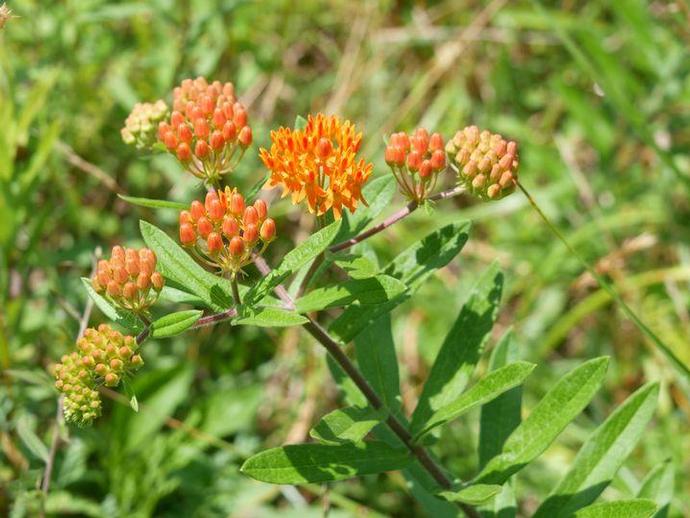
We're reaching into the archives for today's #BenInNature update presented by our friends at ...
May 30, 2021
We're reaching into the archives for today's #BenInNature update presented by our friends at Carter Bank & Trust! The following post was originally published on June 28, 2020. I had always heard this plant referred to as "chigger weed," and I was told that if I touched it, I would get covered in chiggers (tiny red mites that bite you and cause horrible itching). I have no idea where that story came from, but this plant isn't any more prone to chiggers than any other plant out there. In fact, it's more commonly known as "butterfly weed," which is much more appealing. Asclepias tuberosa is a member of the milkweed family, and it's native to eastern and southwestern North America. It's a wonderful plant for attracting ...
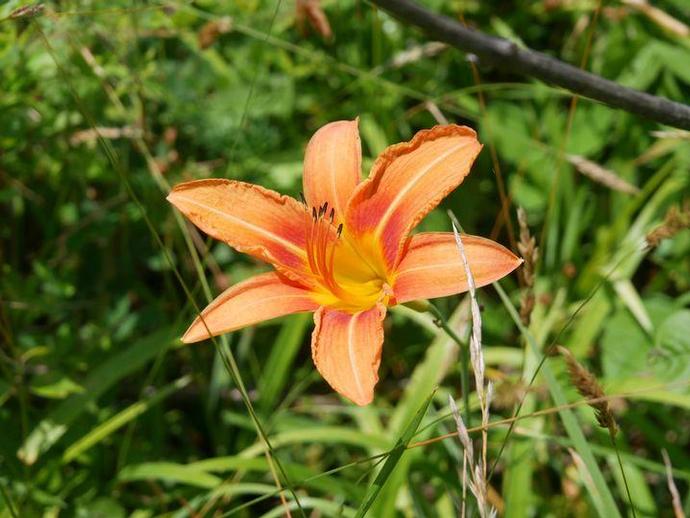
We're reaching into the archives for today's #BenInNature update presented by our friends at ...
May 29, 2021
We're reaching into the archives for today's #BenInNature update presented by our friends at Carter Bank & Trust! The following post was originally published on June 27, 2020. At the risk of revealing how the sausage is made, I have a confession to make: I am not actually a walking encyclopedia of nature knowledge. When I write these posts, I often have to consult an expert to identify the plant or critter I've photographed, and then once I know what I have, I research it and learn all about it. At other times, I'll THINK I know all about the thing I've photographed only to do some research and discover that I didn't know as much as I thought I did. Case in point: Hemerocallis fulva, better known as the orange daylily ...
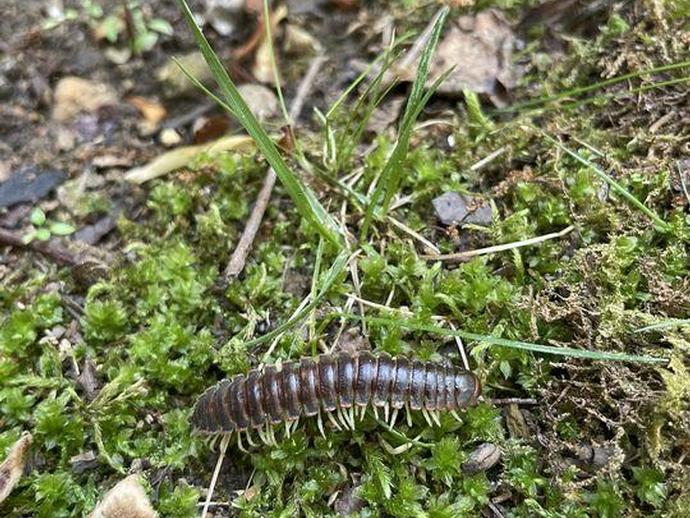
This week our intrepid explorers set out once again in search of undiscovered millipedes and ...
May 28, 2021
This week our intrepid explorers set out once again in search of undiscovered millipedes and other arthropods, this time to the mountains and rolling hills of Tennessee! It was hot and very dry, less than ideal conditions for finding moisture-loving critters like millipedes, but VMNH Myriapodologist Dr. Jackson Means and VMNH Associate Curator of Recent Invertebrates Dr. Kal Ivanov would not be discouraged. In total they visited seven spots from eastern to western Tennessee and back again, collecting over 30 species, several of which are potentially unknown to science! It may be getting hotter and drier out there, but if you look hard enough you can always find nooks and crannies with moisture. Where there is moisture, ...
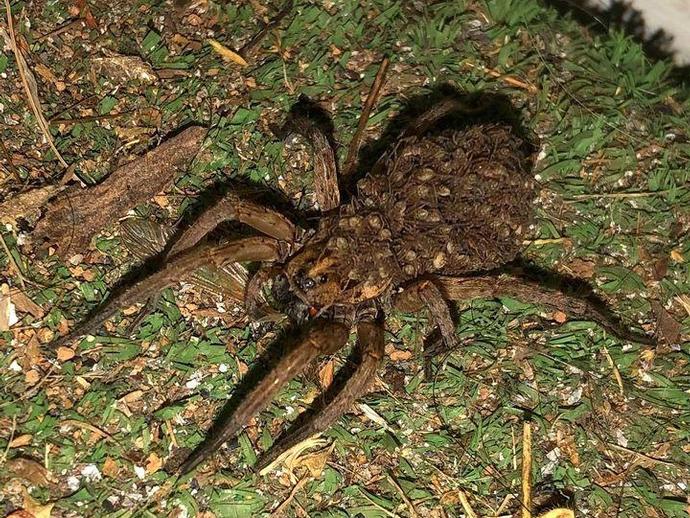
Ben here with the Friday edition of #BenInNature presented by our friends at Carter Bank & Trust!
May 28, 2021
Ben here with the Friday edition of #BenInNature presented by our friends at Carter Bank & Trust! First things first, my apologies. I realize that for many folks out there, these two photos will inspire a reaction of, you know, visceral terror. But female wolf spiders are pretty cool, and I think it's time to pay tribute to these hard-working moms! The first photo of the wolf spider with the egg sac was taken just a couple of weeks ago. When a female wolf spider lays eggs, she wraps them in a silk ball to protect them and attaches it to her spinnerets, which are the silk-producing organs on her abdomen. She'll carry this egg sac with her until the spiderlings emerge, and if she somehow loses it, she'll search until she ...
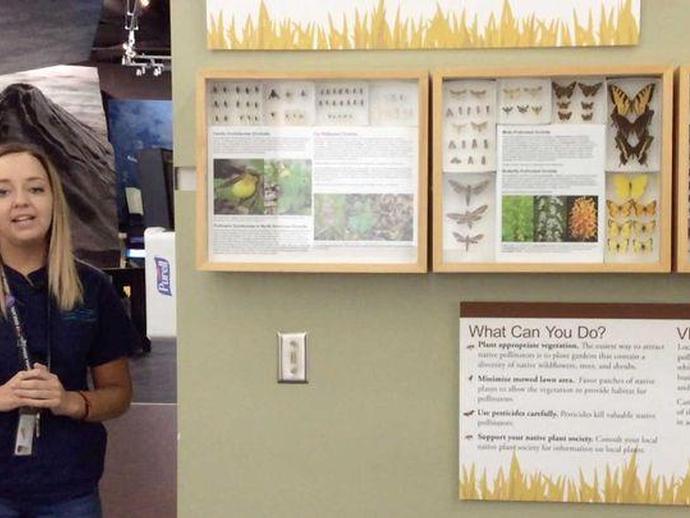
Did you know that almost 90% of all plant species require the help of animals to transfer pollen ...
May 28, 2021
Did you know that almost 90% of all plant species require the help of animals to transfer pollen from one flower to the next? In this latest episode of "Museum Minute", VMNH Educator Terri Robertson is in the George W. Lester, II How Nature Works gallery to highlight the museum's pollinator display and the major impact these animals have on our environment! ABOUT MUSEUM MINUTE The Virginia Museum of Natural History has a spectacular assortment of displays within its exhibit galleries! Some displays are unforgettable, while others don't always get the attention they deserve. Through the original series "Museum Minute", museum educators highlight various displays throughout the exhibit galleries, while providing intriguing ...
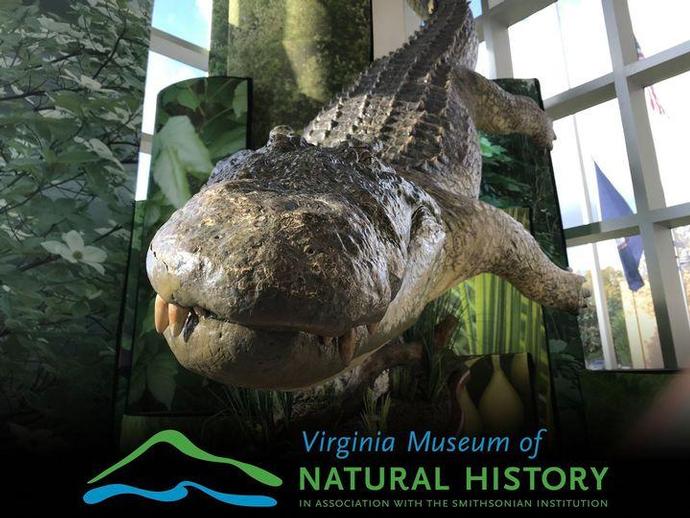
SPECIAL SUNDAY VISITOR HOURS!
May 27, 2021
SPECIAL SUNDAY VISITOR HOURS! Now through Labor Day Weekend, the museum is open to visitors on Sundays from Noon until 4 p.m.! In addition to Sunday operating hours, the museum is currently open to visitors Fridays and Saturdays from 10 a.m. to 4 p.m. and closed all other days. Beginning July 1, 2021 the museum will return to a FULL compliment of operating hours!!! Starting on July 1, visitor days and hours will be: Tuesday - Saturday: 10 a.m. to 4 p.m. Sunday: Noon to 4 p.m. Monday: Closed #WhatWillYouDiscover
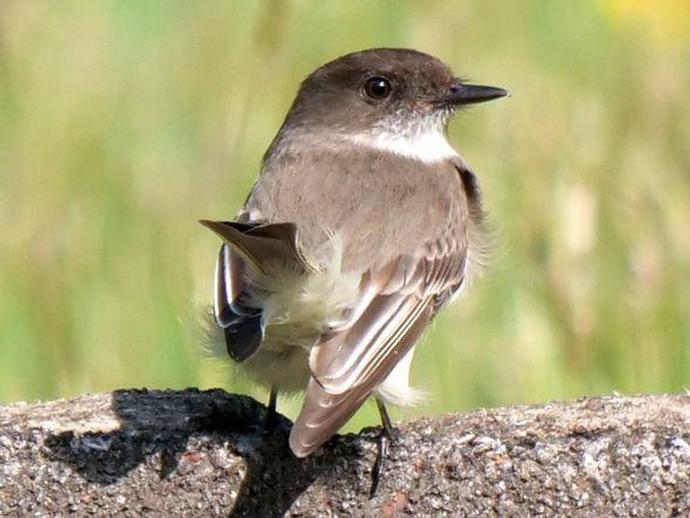
Ben here with today's edition of #BenInNature presented by our friends at Carter Bank & Trust!
May 27, 2021
Ben here with today's edition of #BenInNature presented by our friends at Carter Bank & Trust! The eastern phoebe (Sayornis phoebe) is a fun bird to watch! This phoebe tends to perch in the persimmon sapling I planted behind my house last year. It surveys the yard, and if it sees a bug flying by, it takes off and tries to snatch it out of the air (and usually succeeds). These birds prefer open areas such as yards and parks, and they often build their nests under the eaves of buildings to protect them from the elements. The nests are fairly distinctive; they have a mud base and are lined with moss and grass. At various times of year, the eastern phoebe can be found throughout most of the eastern half of the U.S. and ...
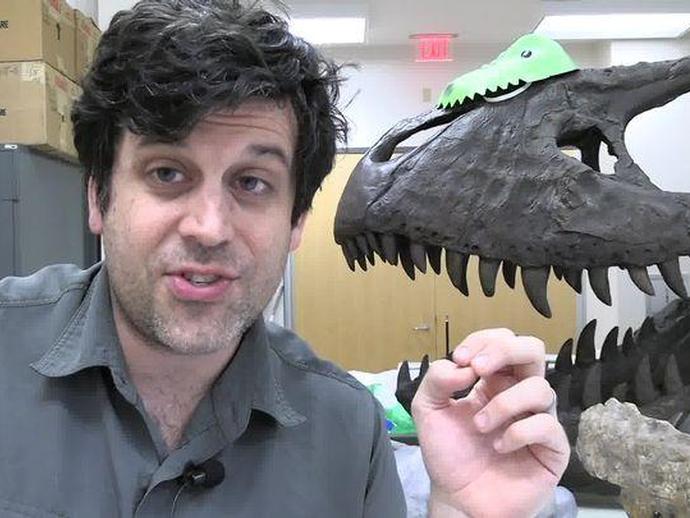
Once the age of the dinosaurs came to an end ...
May 26, 2021
Once the age of the dinosaurs came to an end, you might think our planet's oceans would be a somewhat safer place. Afterall, Earth had lost much of its marine reptile diversity, including plesiosaurs and mosasaurs. However, the oceans after the age of the dinosaurs were still dominated by reptiles, such as giant sea snakes, and Assistant Curator of Paleontology Dr. Adam Pritchard is here to tell you all about these ancient serpents in this latest episode of "Tales of Ancient Life"! Special thanks to Carter Bank & Trust (www.cbtcares.com) and Boxley Materials Company (www.boxley.com) for helping make this episode possible! ABOUT TALES OF ANCIENT LIFE Our planet has an incredible story to tell and VMNH Assistant Curator of ...
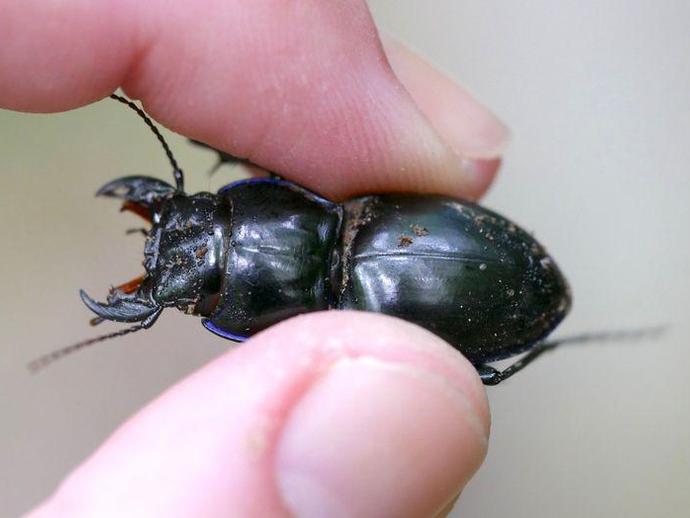
It's time for today's edition of #BenInNature presented by our friends at Carter Bank & Trust!
May 26, 2021
It's time for today's edition of #BenInNature presented by our friends at Carter Bank & Trust! This fellow is Pasimachus punctulatus, a ground beetle in the family Carabidae. There are a number of different species in the genus Pasimachus that all look quite similar, but this particular species can be found from New Jersey south to the Florida panhandle and west to Texas. For whatever reason, I couldn't find a ton of information out there about this species (although I hope the picture is cool enough to make up for it). I did, however, find one scientific note, titled "The Courtship and Copulation of Pasimachus punctulatus," written by Richard D. Alexander back in 1959. In the note, Alexander describes finding a mating ...
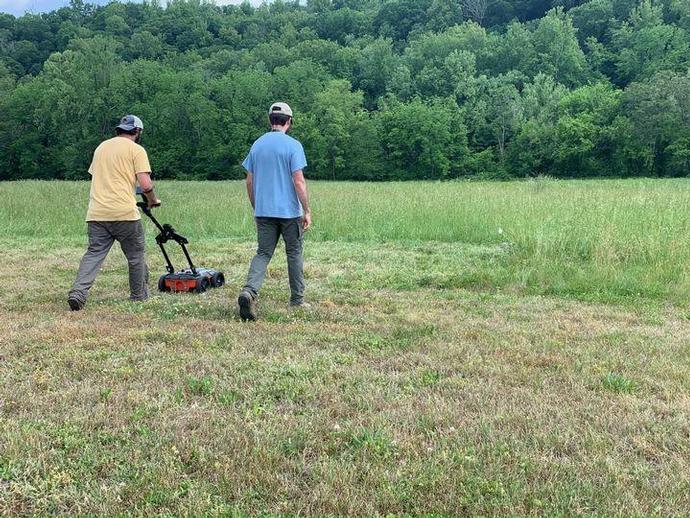
There's never a dull moment in archaeology, regardless of what paleontologists might say!
May 26, 2021
There's never a dull moment in archaeology, regardless of what paleontologists might say! Assistant Curator of Archaeology Dr. Hayden Bassett and his team are conducting field work in Henry County and using some cool tech to get the job done, including the use of a drone for aerial photography (which is being inspected midair by a curious swallow), as well as ground penetrating radar! #VMNHArchaeology
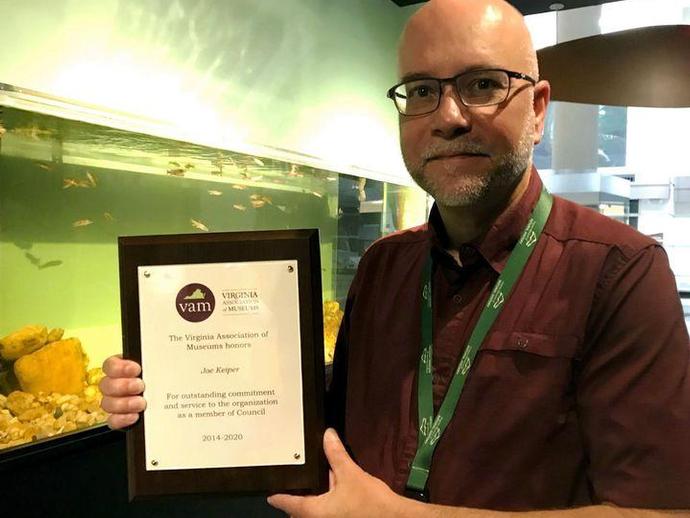
VMNH Executive Director Dr
May 25, 2021
VMNH Executive Director Dr. Joe Keiper was recently awarded with a plaque in recognition of his service as a member of the Virginia Association of Museums Governing Council from 2014-2020! "I'm thrilled to have served 6 years on the board of the Virginia Association of Museums," said Dr. Keiper. "Thank you to Jennifer Thomas and her team, and to my fellow board members. It's an excellent organization that provides professional development and advocacy for all museums and historic properties!" Congratulations, Dr. Keiper, and thank you for your service to VMNH and all museums throughout the Commonwealth!
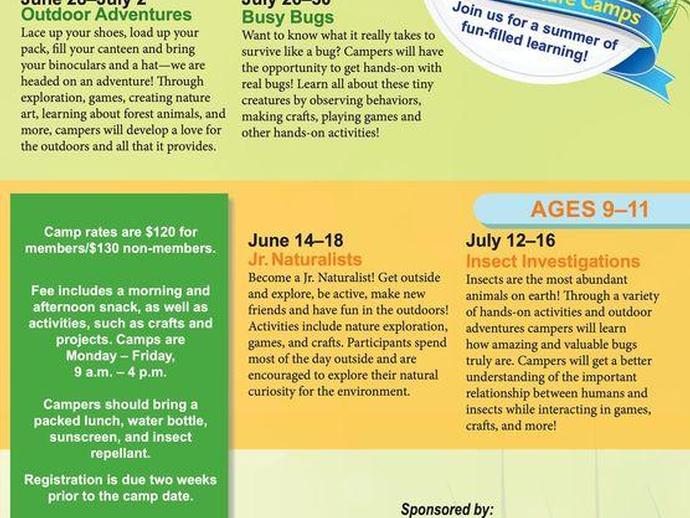
Spaces remain available for the museum's JR
May 25, 2021
Spaces remain available for the museum's JR. NATURALISTS Summer Adventure Camp for ages 9-11 taking place June 14-18 from 9 a.m. to 4 p.m.! However, the pre-registration period is quickly coming to a close. During the Jr. Naturalists camp, participants are encouraged to explore their natural curiosity for the environment! Camp activities include nature exploration, games, and a variety of crafts. The majority of this camp will take place in the great outdoors! Online registration is now available. Visit www.vmnh.net/education/summer-adventure-camps to learn more about this camp and register today!
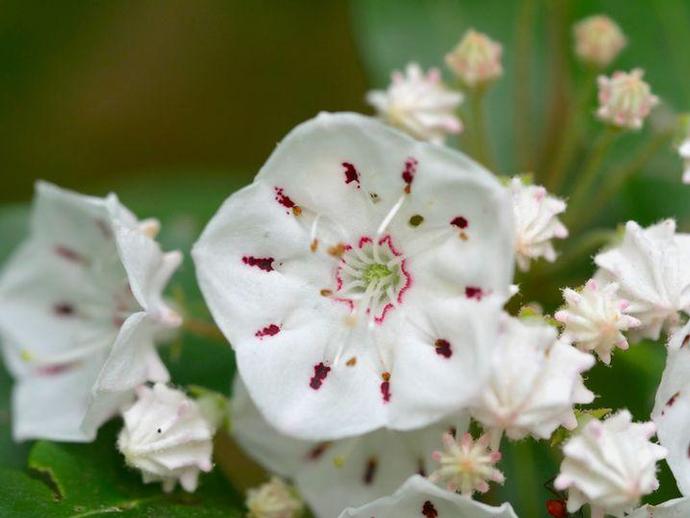
Ben here with the Tuesday edition of #BenInNature presented by our friends at Carter Bank & Trust!
May 25, 2021
Ben here with the Tuesday edition of #BenInNature presented by our friends at Carter Bank & Trust! When we think of plants native to Appalachia, it's hard to imagine many more iconic than mountain laurel (Kalmia latifolia). Also called "spoonwood" because some indigenous Americans used to make spoons from it, mountain laurel can be found in the eastern U.S. from southern Maine all the way down to northern Florida. Mountain laurel is generally found in mountainous forested areas within its range, preferring acidic soil with a pH between 4.5 and 5.5. It has a tendency to grow in dense thickets, especially in low, wet areas. In the southern Appalachians, these thickets become so crowded that they're sometimes referred to ...
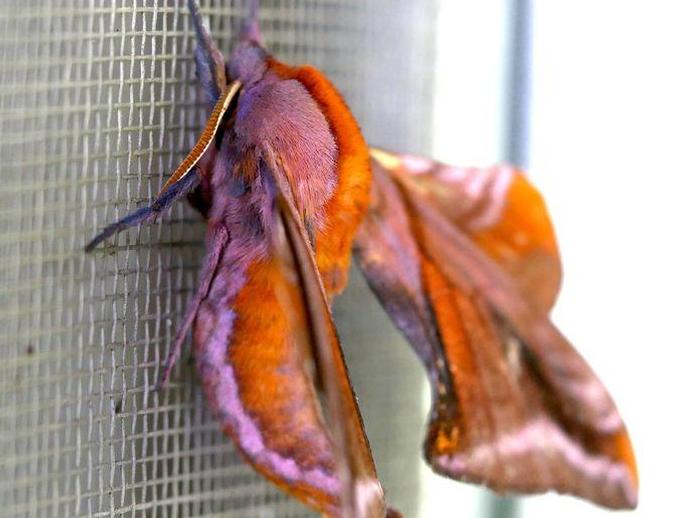
Ben here with today's edition of #BenInNature presented by our friends at Carter Bank & Trust!
May 24, 2021
Ben here with today's edition of #BenInNature presented by our friends at Carter Bank & Trust! Regular #BenInNature readers know that there are few things I love more than a cool moth. Let's kick off the week with the coolest moth I've seen so far this year: Paonias astylus, the huckleberry sphinx! These moths can be found from Maine south to Florida and west to Missouri and Mississippi. Throughout most of their range, they're on the wing from March through June. The caterpillars feed on huckleberry, blueberry, cherries, and willows. Unfortunately, I couldn't find too much additional information about these unique moths. According to bugguide.net (a wonderful website I highly recommend to anyone who wants to learn ...
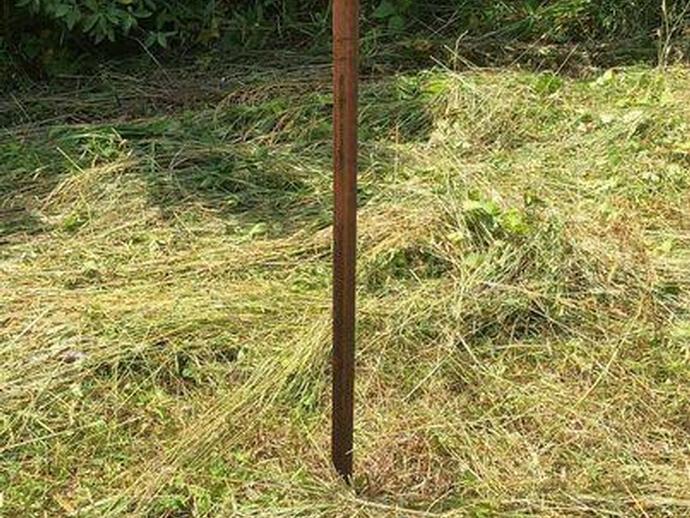
We're reaching into the archives for today's #BenInNature update presented by our friends at ...
May 23, 2021
We're reaching into the archives for today's #BenInNature update presented by our friends at Carter Bank & Trust! The following post was originally published on June 26, 2020. There's a story behind today's nature update! I have a nice neighbor who comes and cuts and bales the hay on my old family property. He started cutting the hay a couple days ago, and as I was walking through a newly-cut field taking nature photos, I nearly tripped over a rabbit nest! These baby rabbits are almost certainly eastern cottontails (Sylvilagus floridanus). When rabbits are ready to give birth, they dig a slanted hole in some soft soil and line the hole with plant material and fur. The mother will come by the nest to nurse about twice ...
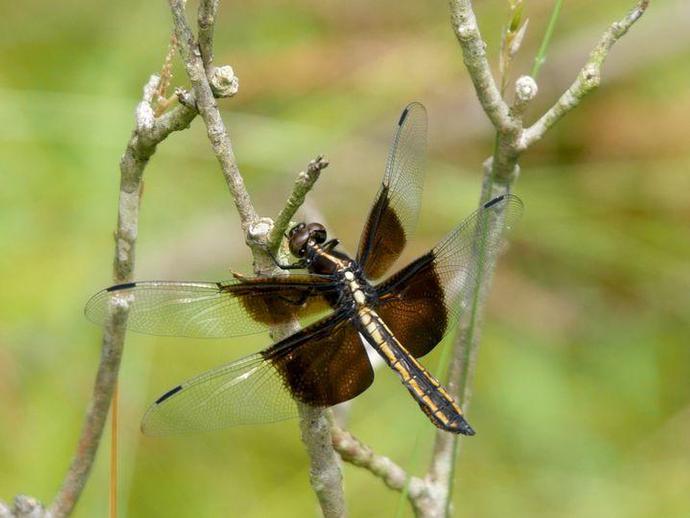
We're reaching into the archives for today's #BenInNature update presented by our friends at ...
May 22, 2021
We're reaching into the archives for today's #BenInNature update presented by our friends at Carter Bank & Trust! The following post was originally published on June 25, 2020. This striking dragonfly is a female Libellula luctuosa, better known as the "widow skimmer." It's a pretty common dragonfly and can be found across the United States (except in some of the higher parts of the Rocky Mountains). Dragonflies look similar to a related group of insects, the damselflies (Zygoptera). It's easy to tell the difference, however; most dragonflies hold their wings flat and away from their bodies, as seen here, while damselflies fold their wings while they're at rest. Damselflies are also weak fliers, while dragonflies are ...

SEEKING YOUTH VOLUNTEERS The Virginia Museum of Natural History is seeking students ages 13-18 ...
May 21, 2021
SEEKING YOUTH VOLUNTEERS The Virginia Museum of Natural History is seeking students ages 13-18 to help facilitate our lineup of Summer Adventure Camps! If you are a parent or legal guardian of a student in this age range that may be interested in helping our team of educators this summer and you'd like to learn more, please contact us at discover@vmnh.virginia.gov! This year, the museum is hosting 4 separate week-long day camps, which take place June 14 - 18, June 28 - July 2, July 12 - 16, and July 26 - 30. Volunteers do not have to be available for all 4 camps.
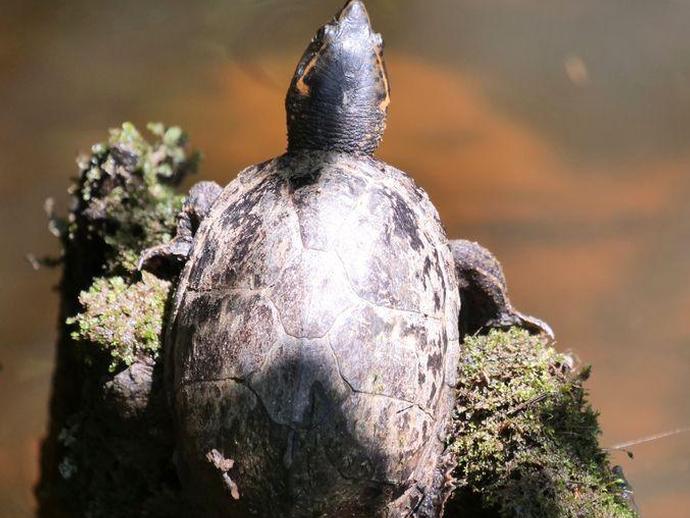
Ben here with the Friday edition of #BenInNature presented by our friends at Carter Bank & Trust!
May 21, 2021
Ben here with the Friday edition of #BenInNature presented by our friends at Carter Bank & Trust! Starting on Monday, I'll return to sharing critters that I've photographed right here in southwest Virginia. However, I'm going to share one last cool find from my recent vacation: a musk turtle (Sternotherus odoratus), photographed at Phinizy Swamp Nature Park in Augusta, Georgia. This turtle is also referred to as the "stinkpot," which seems a little harsh even if it does come by the name honestly. These turtles have the ability to release a foul smell from scent glands at the edge of the shell, most likely to deter predators! These small turtles can be found throughout most of the eastern half of the U.S. They commonly ...
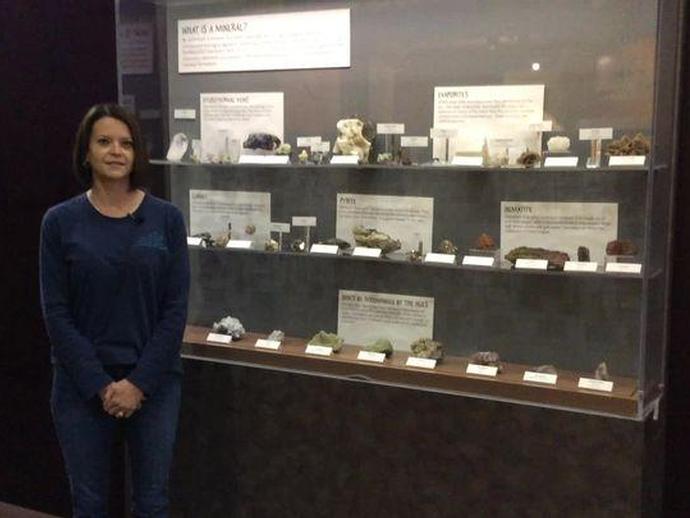
VMNH Education Manager Christy Deatherage is inside the Lee and George W
May 21, 2021
VMNH Education Manager Christy Deatherage is inside the Lee and George W. Lester, II How Nature Works gallery this week to highlight the exhibit's mineral display, which features a large variety of specimens, including quartz, fluorite and pyrite (aka "fool's gold")! ABOUT MUSEUM MINUTE The Virginia Museum of Natural History has a spectacular assortment of displays within its exhibit galleries! Some displays are unforgettable, while others don't always get the attention they deserve. Through the original series "Museum Minute", museum educators highlight various displays throughout the exhibit galleries, while providing intriguing facts you may not have known. "Museum Minute" is made possible thanks to VMNH Corporate ...
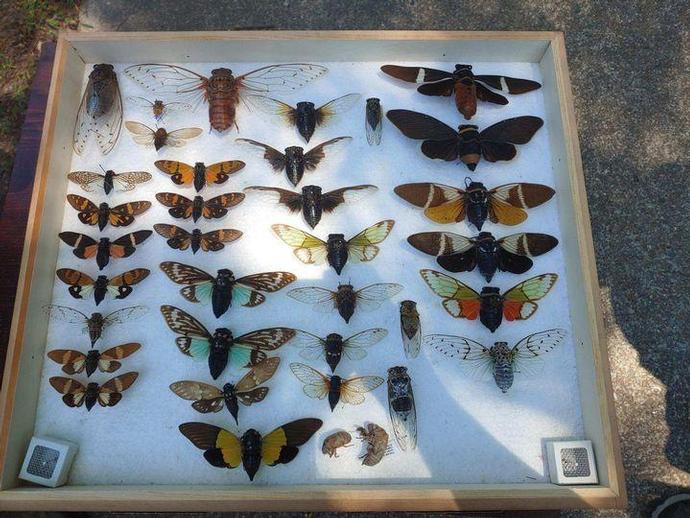
Natural history museums serve many purposes ...
May 21, 2021
Natural history museums serve many purposes, including educating the public, producing in-depth research, and documenting the regional flora and fauna. But above all, natural history museums exist to collect, curate, and store specimens for use by the scientific community and outreach. Curators do their fair share of amassing specimens from the wild, but the vast majority of museum collections come from private donations. This week, Virginia Museum of Natural History staff traveled to Virginia Beach to pick up one such private collection and were stunned by its size, diversity, and beauty. William R. Shealey, professor emeritus of Religious Studies at Virginia Wesleyan University, started collecting insects when he was 4 ...
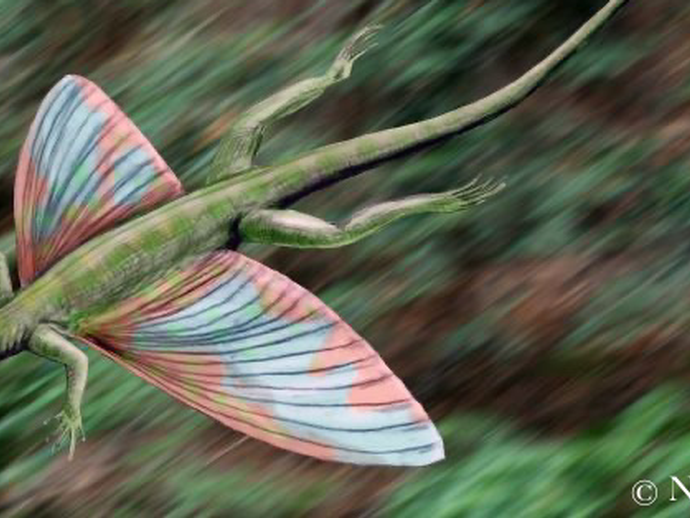
During the Permian Period (299–252 million years ago) ...
May 20, 2021
During the Permian Period (299–252 million years ago), reptiles were small and relatively rare parts of Earth's ecosystems. Only after the major extinction at the end of the Permian, 252 million years ago, did reptiles and dinosaurs rise to dominance. Learning about the rare Permian reptiles is essential to truly understanding the origins of the Age of Dinosaurs. Among the weirdest of early reptiles are the WEIGELTISAURIDS, a family of very rare, lizard-like animals with horned skulls and rod-like bones that supported a gliding membrane. Fewer than a dozen weigeltisaurid skeletons have been discovered. In a scientific paper just published in the journal PeerJ, VMNH Assistant Curator of Paleontology Dr. Adam ...
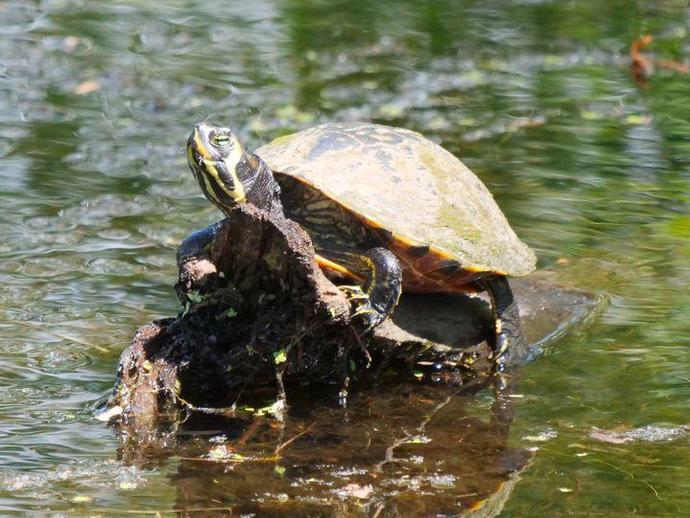
Ben here with today's edition of #BenInNature presented by our friends at Carter Bank & Trust!
May 20, 2021
Ben here with today's edition of #BenInNature presented by our friends at Carter Bank & Trust! Here's a cool turtle that I spotted at Brick Pond Park in North Augusta, South Carolina: Trachemys scripta elegans, the red-eared slider! The red-eared slider is perhaps the most famous turtle in the world. It's not just the most popular pet turtle in the U.S.; it's the most commonly traded reptile in the entire world! In fact, according to canon, the Teenage Mutant Ninja Turtles began their lives as red-eared sliders (prior to the mutations and ninja training). Why the popularity? It's a combination of factors. They don't grow too large, they're easy to maintain, they don't cost much to purchase, and their food is fairly ...
Yesterday ...
May 20, 2021
Yesterday, officials from the City of Waynesboro and the museum hosted a sign unveiling at the site of the future home of the museum's Waynesboro campus! Additionally, officials announced that funding for the detailed design of the museum's campus near the Shenandoah National Park has been included in Virginia's budget. Inclusion in the bill will allow the museum to move forward with detailed design work and exhibit experience of the new museum facility in Downtown Waynesboro. To be located at the corner of W. Main and Arch Streets in Downtown Waynesboro, VMNH-Waynesboro will contain approximately 20,000 square feet of exhibits, classrooms, and visible laboratories, as well as a planned green roof overlooking South River ...

Today ...
May 19, 2021
Today, officials from the City of Waynesboro and the museum hosted a sign unveiling marking the future home of the museum's Waynesboro campus! Additionally, officials announced that funding for the detailed design of the museum's campus near the Shenandoah National Park has been included in Virginia's budget, which has been approved by the Virginia General Assembly. Inclusion in the bill will allow the museum to move forward with detailed design work and exhibit experience of the new museum facility in Downtown Waynesboro. To be located at the corner of W. Main and Arch Streets in Downtown Waynesboro, VMNH-Waynesboro will contain approximately 20,000 square feet of exhibits, classrooms, and visible laboratories, as well as ...

Exciting news for the future Waynesboro campus of the Virginia Museum of Natural History!
May 19, 2021
Exciting news for the future Waynesboro campus of the Virginia Museum of Natural History! Funding for the detailed design of the museum's campus near the Shenandoah National Park has been included in Virginia's budget, which has been approved by the Virginia General Assembly. Inclusion in the bill will allow the museum to move forward with detailed design work and exhibit experience of the new museum facility in Downtown Waynesboro. To be located at the corner of W. Main and Arch Streets in Downtown Waynesboro, VMNH-Waynesboro will contain approximately 20,000 square feet of exhibits, classrooms, and visible laboratories, as well as a planned green roof overlooking South River and the Blue Ridge Mountains. Learn more at ...
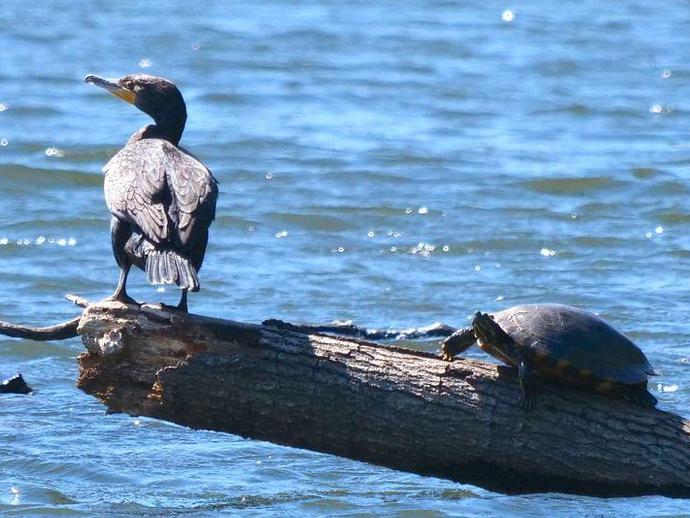
Ben here with the Wednesday edition of #BenInNature presented by our friends at Carter Bank & ...
May 19, 2021
Ben here with the Wednesday edition of #BenInNature presented by our friends at Carter Bank & Trust! Here's another find from my recent trip to South Carolina: a double-crested cormorant (Phalacrocorax auritus), spotted at Brick Pond Park in North Augusta. And also its turtle friend. Double-crested cormorants have a wide distribution and can be found almost everywhere in the U.S. depending upon the time of year. They can be found in Virginia during their migration season, but they're most easily spotted along the Virginia coast. Much like the anhinga we looked at last week, the double-crested cormorant can often be spotted with its wings spread out to dry in the sun. They produce very little preen oil, which means ...

Be sure to check out the VMNH Facebook page tomorrow (Wednesday) at 2pm for exciting news ...
May 18, 2021
Be sure to check out the VMNH Facebook page tomorrow (Wednesday) at 2pm for exciting news regarding the future Waynesboro campus of the Virginia Museum of Natural History!
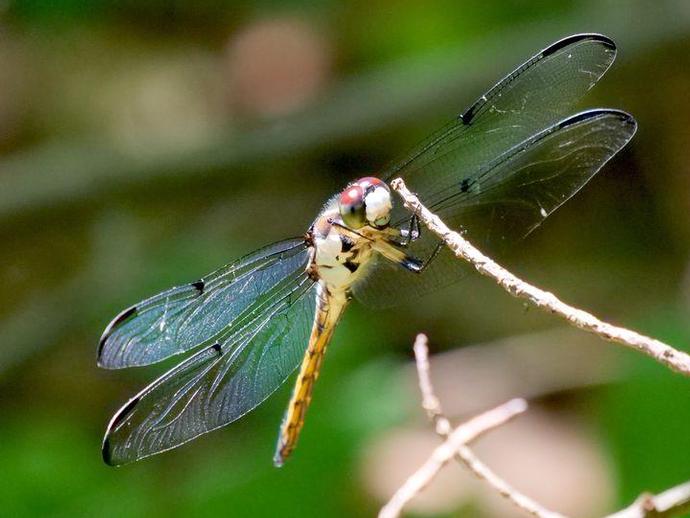
It's time for today's edition of #BenInNature presented by our friends at Carter Bank & Trust!
May 18, 2021
It's time for today's edition of #BenInNature presented by our friends at Carter Bank & Trust! Here's another cool critter from my recent trip to Phinizy Swamp Nature Park in Augusta, Georgia (I'll be switching back to stuff from Virginia soon, I swear). This is the dragonfly Libellula vibrans, better known as the great blue skimmer! You're probably thinking, "The great blue skimmer doesn't look particularly blue to me." This is because female great blue skimmers and juveniles are more brown in color, while the adult males are pale blue. The two pictured skimmers are most likely juveniles. These dragonflies can be found throughout most of the eastern U.S., including in Virginia. They're most abundant in July and ...
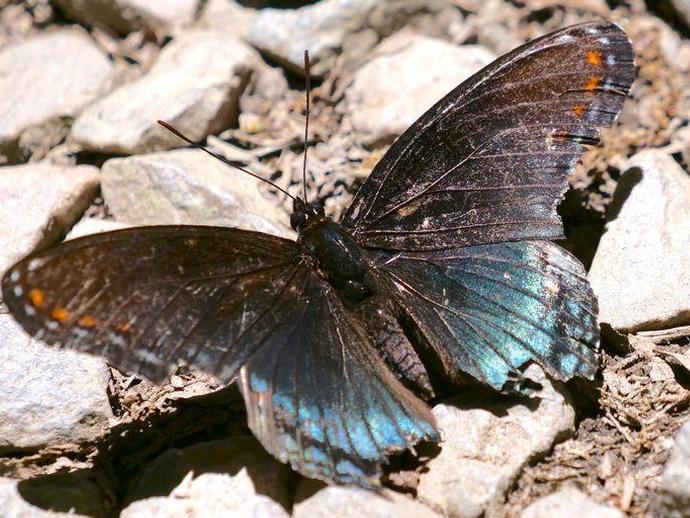
It's time for today's edition of #BenInNature presented by our friends at Carter Bank & Trust!
May 17, 2021
It's time for today's edition of #BenInNature presented by our friends at Carter Bank & Trust! Here's an interesting find from my recent trip to Phinizy Swamp Nature Park in Augusta, Georgia. When I first saw this butterfly, I almost didn't snap a picture of it; I assumed it was just a black morph of a female eastern tiger swallowtail butterfly (Papilio glaucus), which are pretty easy to find. However, upon closer examination, I realized that this little guy is something else entirely, and while it's not uncommon, it's a pretty unusual critter! This is Limenitis arthemis, better known as the red-spotted purple ... unless you find one up north, in which case it's called a white admiral and looks completely different. That ...
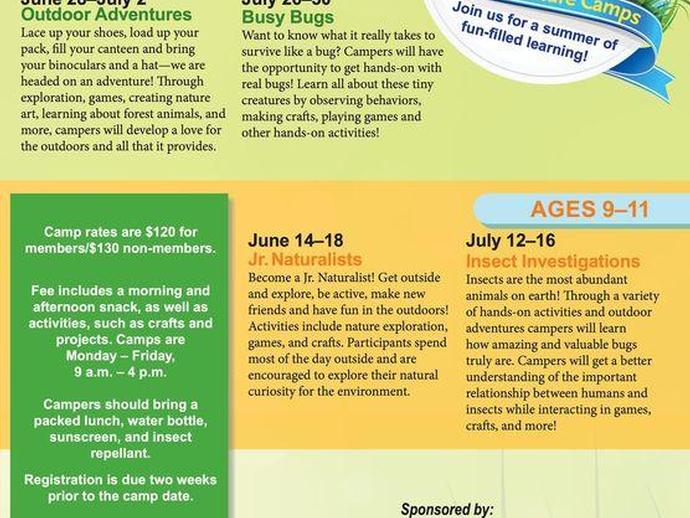
SUMMER ADVENTURE CAMPS Online registration is now open for the museum's exciting lineup of ...
May 17, 2021
SUMMER ADVENTURE CAMPS Online registration is now open for the museum's exciting lineup of Summer Adventure Camps for ages 6-11! With a heavy emphasis on the great outdoors and the creatures that inhabit it, each of our week-long day camps presents your young adventurer with an awesome opportunity for nature exploration! Registration for each camp is required two weeks prior to the camp's start date, so don't delay! Visit www.vmnh.net/education/summer-adventure-camps to learn more and register!
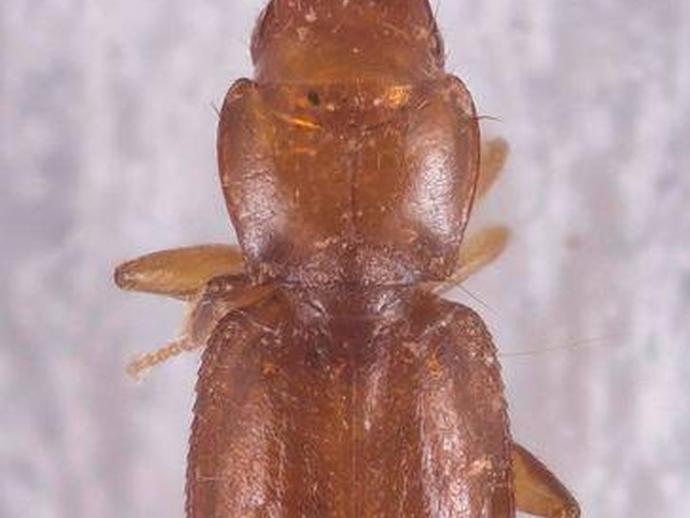
We're reaching into the archives for today's #BenInNature update presented by our friends at ...
May 16, 2021
We're reaching into the archives for today's #BenInNature update presented by our friends at Carter Bank & Trust! The following post was originally published on June 24, 2020. Awhile back, former VMNH Research Technician and current Clemson University grad student Curt Harden set up some subterranean beetle traps on my property. These are special traps of Curt's own devising designed to capture miniscule ground beetles. Curt is one of just a handful of folks in the world who studies these beetles! When he checked the traps last November, he ended up finding a new species of ground beetle belonging to the genus Anillinus! Believe it or not, this beetle is only a little bit bigger than a pinhead, about two millimeters ...
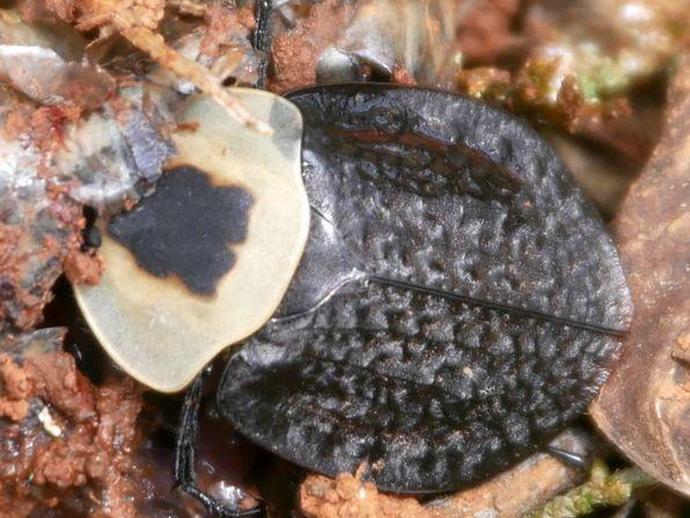
We're reaching into the archives for today's #BenInNature update presented by our friends at ...
May 15, 2021
We're reaching into the archives for today's #BenInNature update presented by our friends at Carter Bank & Trust ! The following post was originally published on June 23, 2020. The other day, I found a skink in my yard that had met a mysterious and untimely end. While this was unfortunate, it did allow me to spot a beetle that I'd read about but never before seen in person: Necrophila americana, the American carrion beetle. As you might imagine, these beetles eat dead animals (and fungi), and they also lay their eggs in dead critters, which then provide a tasty treat for the larvae once they hatch. The circle of life can be kind of gross, but it's a better alternative than having dead animals all over the place. In ...
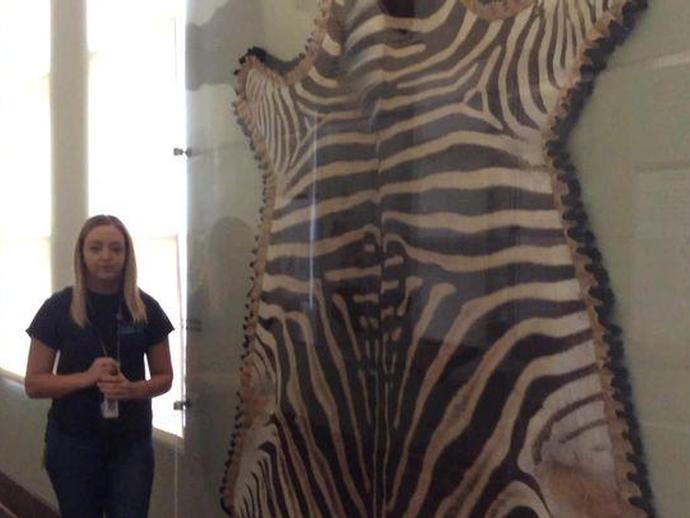
Why do zebras have stripes? Because they don't want to be spotted!
May 14, 2021
Why do zebras have stripes? Because they don't want to be spotted! Bad jokes aside, scientists still don't know for certain why zebras have stripes, but many theories revolve around camouflage. In this episode of "Museum Minute", VMNH Educator Terri Robertson is in the Hahn Hall of Biodiversity to discuss some of the reasons zebras might have stripes! ABOUT MUSEUM MINUTE The Virginia Museum of Natural History has a spectacular assortment of displays within its exhibit galleries! Some displays are unforgettable, while others don't always get the attention they deserve. Through the original series "Museum Minute", museum educators highlight various displays throughout the exhibit galleries, while providing intriguing facts ...
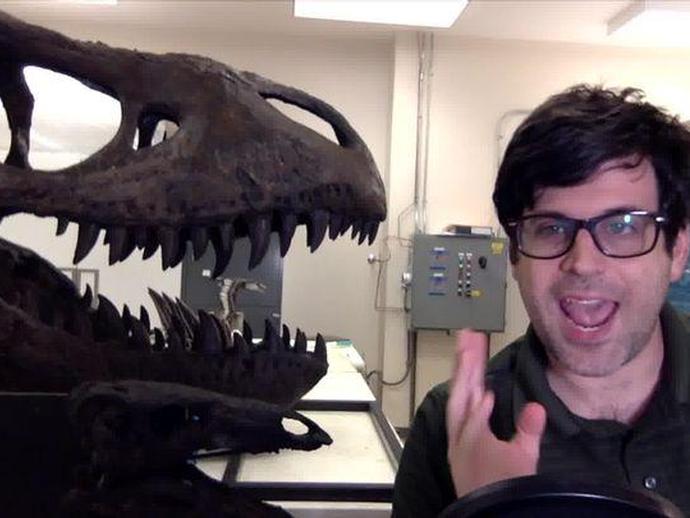
Assistant Curator of Paleontology Dr
May 14, 2021
Assistant Curator of Paleontology Dr. Adam Pritchard is back with a brand new edition of "Tales of Ancient Life" to highlight two newly named species of dinosaurs from North America and explain how the specimens from these two species are about as different as museum specimens can be! Special thanks to Carter Bank & Trust (www.cbtcares.com) and Boxley Materials Company (www.boxley.com) for helping make this episode possible! ABOUT TALES OF ANCIENT LIFE Our planet has an incredible story to tell and VMNH Assistant Curator of Paleontology Dr. Adam Pritchard helps share it through his original video series, "Tales of Ancient Life". Dr. Pritchard uses spectacular fossils and other scientific specimens from the museum's ...
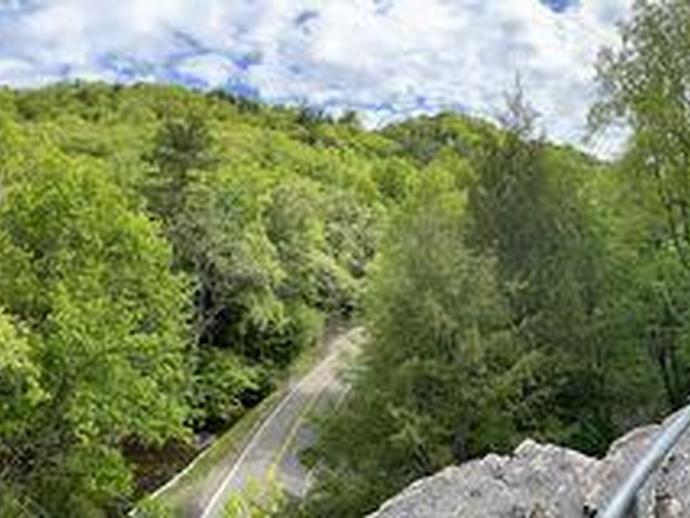
VMNH Associate Curator of Recent Invertebrates Dr
May 14, 2021
VMNH Associate Curator of Recent Invertebrates Dr. Kal Ivanov and VMNH Myriapodologist (millipede expert) Dr. Jackson Means continued their streak of discovery earlier this week when they traveled to North Carolina and Tennessee in search of undescribed species of millipedes, and hit gold with a new species in the genus Nannaria! All morning it pelted down rain, but despite the chill and wet, our intrepid explorers trudged on, determined to find their quarry. In total, around 15 different species of millipede were found, including the beautiful Sigmoria latior (with red spots) and Appalachioria ethotela (with yellow spots). Kal and Jackson ended their trip at Backbone Rock Recreation Area in eastern Tennessee, which ...
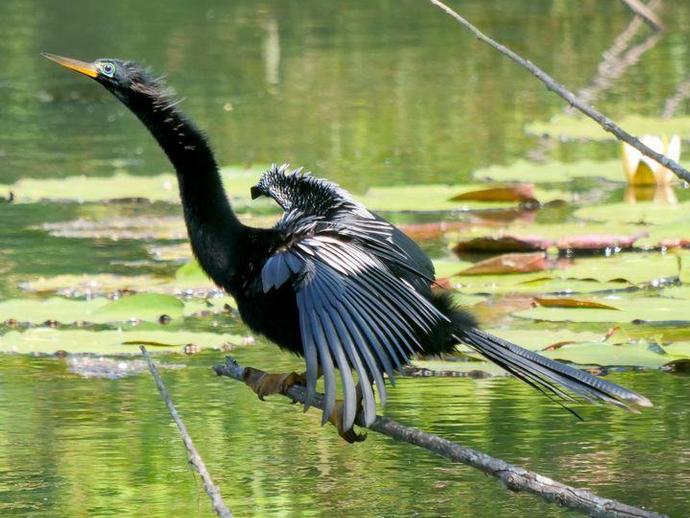
It's time for today's edition of #BenInNature presented by our friends at Carter Bank & Trust!
May 14, 2021
It's time for today's edition of #BenInNature presented by our friends at Carter Bank & Trust! Here's my favorite find from my vacation last week: an anhinga (Anhinga anhinga leucogaster), spotted at Brick Pond Park in North Augusta, South Carolina! While stray anhingas will sometimes venture farther north, the northern extent of their range is generally recognized as southern South Carolina, meaning this isn't a bird we're likely to spot here in Virginia. They can be found in the extreme southeastern U.S. along the coast all the way down to South America, which is where they're most common. Anhingas are sometimes called snakebirds because they often swim with only their long necks poking from the water. They use their ...
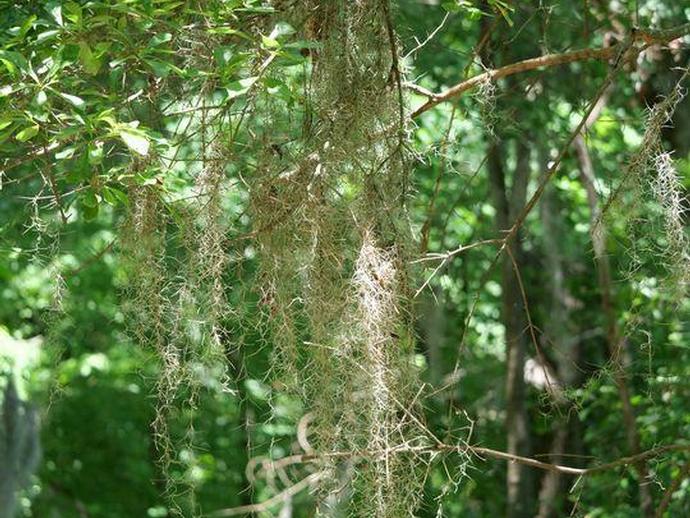
It's time for the Thursday edition of #BenInNature presented by our friends at Carter Bank & ...
May 13, 2021
It's time for the Thursday edition of #BenInNature presented by our friends at Carter Bank & Trust! Here's another cool find from my recent trip to Phinizy Swamp Nature Park in Augusta, Georgia: Spanish moss! Spanish moss (Tillandsia usneoides) is neither Spanish, nor is it moss! It's actually a flowering plant in the family Bromeliaceae, also known as the bromeliads. There are more than 3,500 bromeliads, all of which are native to the southern U.S., Mexico, Central America, and South America. Believe it or not, Spanish moss is more closely related to pineapples than to moss or lichens! This unusual plant can be found in Virginia, although you'll have to go to the southeastern corner of the state to find it; the ...
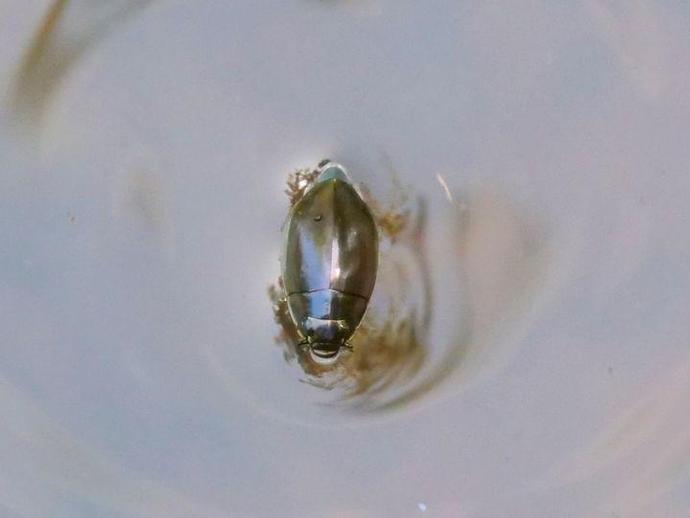
It's time for today's edition of #BenInNature presented by our friends at Carter Bank & Trust!
May 12, 2021
It's time for today's edition of #BenInNature presented by our friends at Carter Bank & Trust! The whirligig beetle (family Gyrinidae) may not look all that striking, but once you scratch the surface, this is a truly unusual little critter! Whirligig beetles are generally found swimming on the surface of the water -- I spotted this one on my recent trip to Phinizy Swamp Nature Park in Augusta, Georgia -- although they can also dive beneath the surface, and many species can even take flight from the water! They get their name from their unusual movements and gyrations while swimming, often swimming rapidly in circles if startled. One of the most unusual features of the whirligig beetle is that its compound eyes are ...
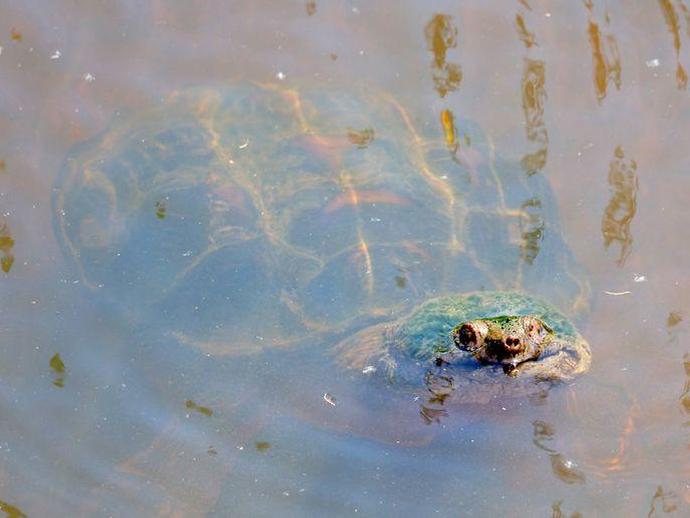
It's time for the Tuesday edition of #BenInNature presented by our friends at Carter Bank & Trust!
May 11, 2021
It's time for the Tuesday edition of #BenInNature presented by our friends at Carter Bank & Trust! Here's another cool find from my recent trip to Phinizy Swamp Nature Park in Augusta, Georgia: Chelydra serpentina, the common snapping turtle! Common snapping turtles can also be found in Virginia, and they're pretty common throughout the eastern two-thirds of the U.S. You might occasionally see them crossing the road, or -- like this one -- you might see them in shallow water, occasionally poking their snout above the waterline and using it like a snorkel. Snapping turtles are pretty indiscriminate when it comes to their diets, and they'll often scavenge for plant or animal matter. However, they'll also eat anything ...
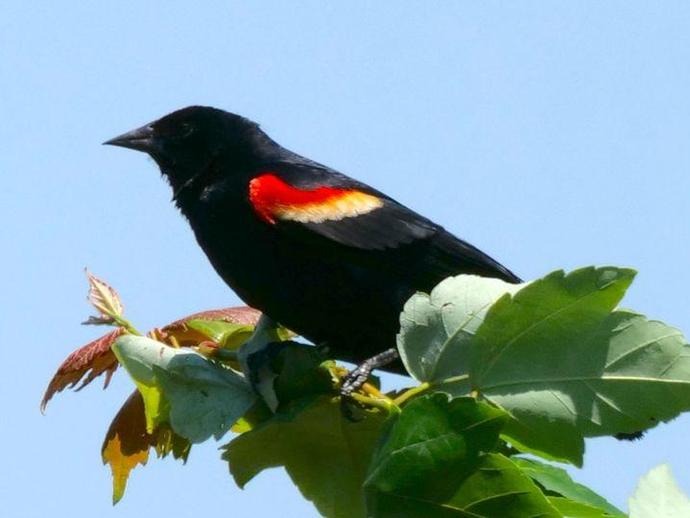
It's time for today's edition of #BenInNature presented by our friends at Carter Bank & Trust!
May 10, 2021
It's time for today's edition of #BenInNature presented by our friends at Carter Bank & Trust! Last week, I went on a trip to South Carolina that included a detour to a couple of amazing nature parks in Augusta, Georgia. Over the next week or so, I'll be sharing some of my favorite critters that I spotted, many of which can be found in Virginia, a few of which can only be found a little farther south. We'll kick things off with a bird that I've seen in Martinsville and Henry County in years past: Agelaius phoeniceus, the red-winged blackbird! The red-winged blackbird is one of my favorite birds, and I used to see them frequently in a swampy area off of King's Mountain Road in Martinsville, although it's been awhile ...
Registration is now open for our exciting lineup of Summer Adventure Camps for ages 6-11!
May 10, 2021
Registration is now open for our exciting lineup of Summer Adventure Camps for ages 6-11! With a heavy emphasis on the great outdoors and the creatures that inhabit it, each of our week-long day camps presents your young adventurer with an awesome opportunity for nature exploration! A limited amount of availability remains for each camp, so be sure to reserve a spot today!
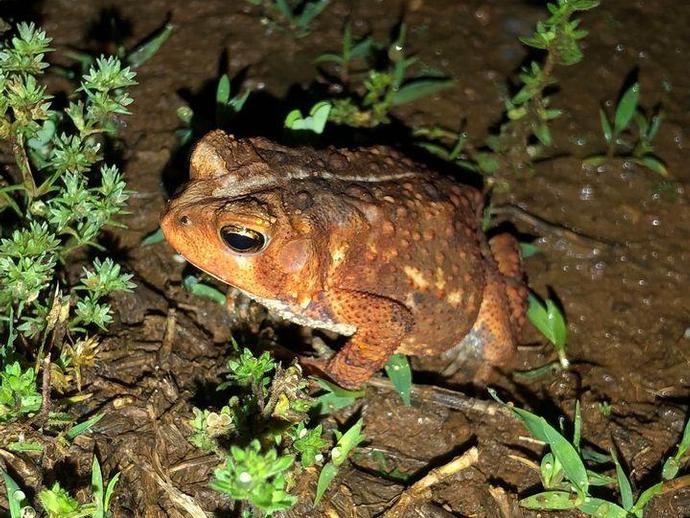
We're reaching into the archives for today's #BenInNature update presented by our friends at ...
May 9, 2021
We're reaching into the archives for today's #BenInNature update presented by our friends at Carter Bank & Trust! The following post was originally published on June 22, 2020. The eastern American toad (Anaxyrus americanus americanus) is a common sight in southwest Virginia and it's the most common subspecies of the American toad. It can be found throughout much of eastern North America (although it doesn't extend much farther south than North Carolina). Another subspecies, the dwarf American toad (A. a. charlesmithi) can be found in Arkansas and parts of neighboring states, while a third subspecies, the Hudson Bay toad (A. a. copei) can rarely be found in isolated populations in northern Ontario. The eastern American ...
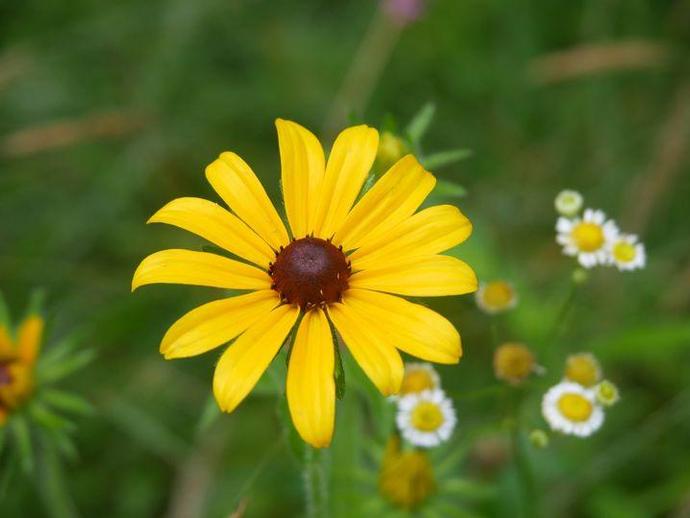
We're reaching into the archives for today's #BenInNature update presented by our friends at ...
May 8, 2021
We're reaching into the archives for today's #BenInNature update presented by our friends at Carter Bank & Trust! The following post was originally published on June 21, 2020. Even folks who aren't interested in wildflowers can likely identify black-eyed Susans (Rudbeckia hirta). While this member of the sunflower family is native to eastern and central North America, it can be found in all 48 contiguous states and every Canadian Province! If you like butterflies and other pollinators around your home, black-eyed Susans are a great attractant. They're also the host plant for a handful of caterpillars, such as the silvery checkerspot, the gorgone checkerspot and the bordered patch. The black-eyed Susan is a pretty ...
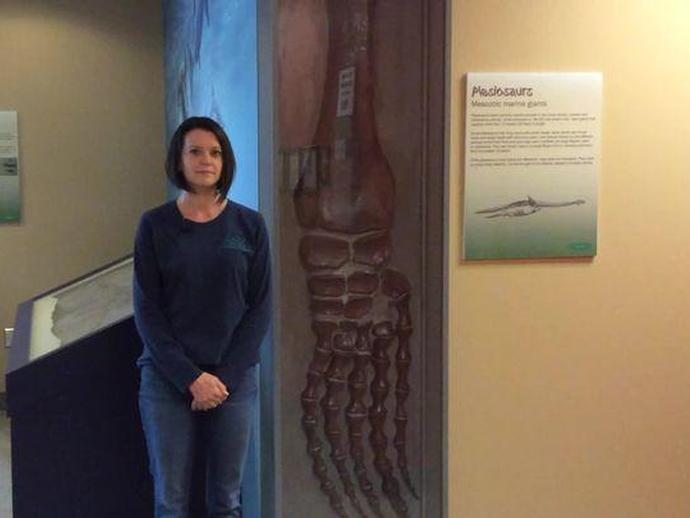
Plesiosaurs were giant marine animals that swam Earth's oceans during the Jurassic and ...
May 7, 2021
Plesiosaurs were giant marine animals that swam Earth's oceans during the Jurassic and Cretaceous periods and the highlight of this week's edition of "Museum Minute"! ABOUT MUSEUM MINUTE The Virginia Museum of Natural History has a spectacular assortment of displays within its exhibit galleries! Some displays are unforgettable, while others don't always get the attention they deserve. Through the original series "Museum Minute", museum educators highlight various displays throughout the exhibit galleries, while providing intriguing facts you may not have known. "Museum Minute" is made possible thanks to VMNH Corporate Partners Carter Bank & Trust (www.cbtcares.com) and Boxley Materials Company (www.boxley.com).
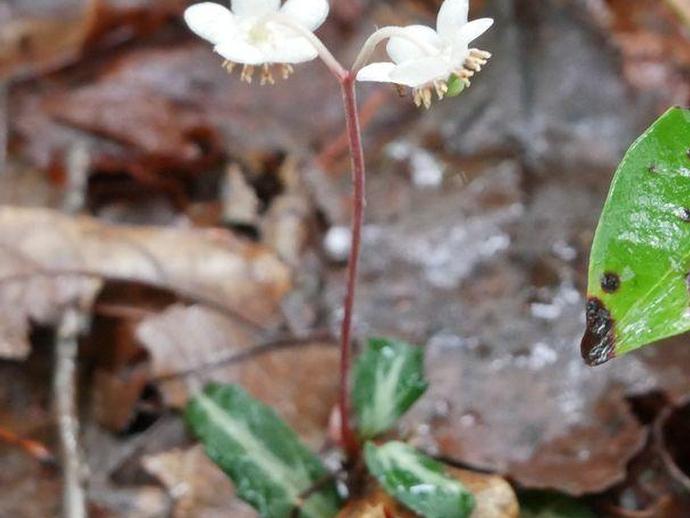
Ben is currently on vacation ...
May 7, 2021
Ben is currently on vacation, so we're reaching into the archives for today's #BenInNature update presented by our friends at Carter Bank & Trust! The following post was originally published on June 20, 2020. Spotted wintergreen (Chimaphila maculata) is in bloom right now! This perennial evergreen herb is a fairly common sight in the forests of southwest Virginia, although it's pretty rare in many parts of its range. Its variegated (differently colored) leaves make it fairly easy to spot. It prefers sandy, well-drained soil and it can tolerate acidic soil. The Creek Indians referred to this plant as pipsisikweu, which translates to "breaks into small pieces." It was believed that leaves could be made into a tea that ...
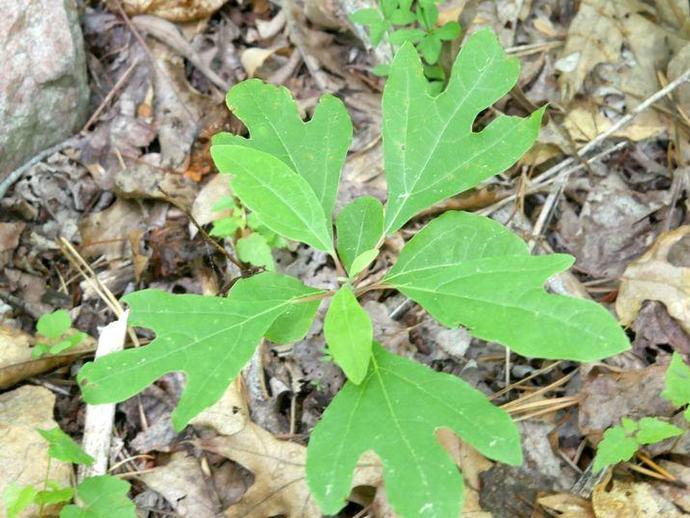
Ben is on vacation the rest of this week ...
May 6, 2021
Ben is on vacation the rest of this week, so we're reaching into the archives for today's #BenInNature update presented by our friends at Carter Bank & Trust! The following post was originally published on June 19, 2020. White sassafras (Sassafras albidum) is native to the eastern U.S., and it's long been a very important tree for a wide variety of commercial uses. When the English first came to America, they exported sassafras to Europe where it was converted into a drink called "saloop" that was supposed to have medicinal qualities. Sassafras quickly became touted as a cure-all for a wide variety of maladies. The bark of sassafras contains safrole oil, an aromatic chemical that was used as an additive in everything ...
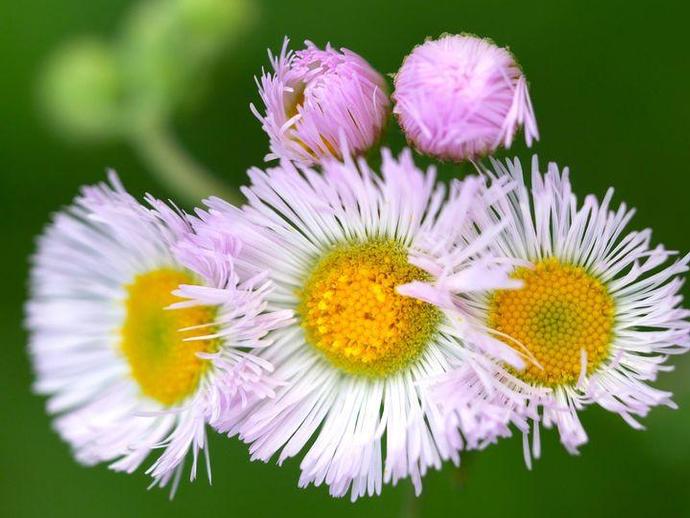
Ben here with the Wednesday edition of #BenInNature presented by our friends at Carter Bank & ...
May 5, 2021
Ben here with the Wednesday edition of #BenInNature presented by our friends at Carter Bank & Trust! This is Erigeron philadelphicus, also called common fleabane or Philadelphia fleabane, and it's a pretty common member of the daisy family. So many of the plants we've looked at in these nature posts turn out to be invasive species here in the United States, but not this one! Common fleabane is native to the U.S.! Of course, it's an introduced species in Europe and Asia and it's considered an invasive species there, so you win some, you lose some. These daisies tend to feature arrays composed of multiple flower heads; this one has five, but some have been found with as many as 35 heads! Each head can contain 100-400 pink ...
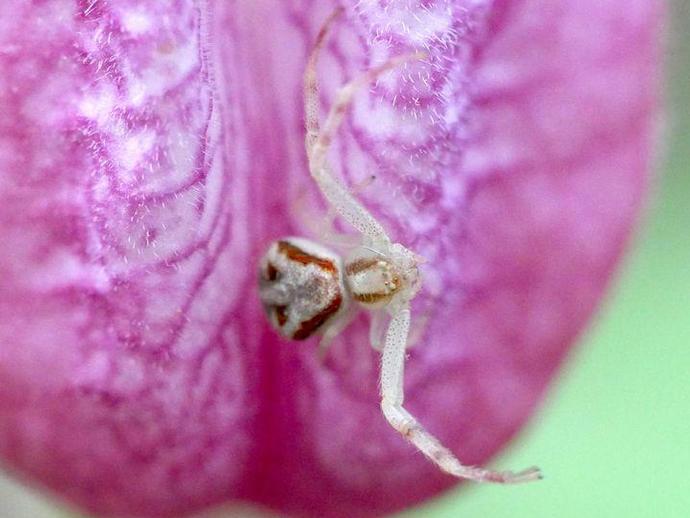
It's time for today's edition of #BenInNature presented by our friends at Carter Bank & Trust!
May 4, 2021
It's time for today's edition of #BenInNature presented by our friends at Carter Bank & Trust! Yesterday, we looked at the pink lady's slipper orchid (Cypripedium acaule), and I mentioned that today's nature post subject was hiding in the photos of the orchid. Here it is: a crab spider! I'm pretty sure this particular crab spider is the northern crab spider Mecaphesa asperata, a fairly common species that can be found in North America, Central America, and the Caribbean, although any spider experts wishing to correct me are welcome to do so below! Crab spiders get their name because they have the unique ability to walk sideways as well as forward and backward. They are also commonly called "flower spiders" because ...
Archives
2025
2024
2023
2022
2021
2020
2019
2018
2017
2016
2015
2014
2013
2012
2011
2010
2009
2008

Please Visit Us Soon
Hours:
Tuesday - Saturday: 10am - 4pm
Sunday: Noon to 4pm (Memorial Day Weekend through Labor Day Weekend only)
Monday: Closed
Admission:
$12 for ages 18-59
$6 for ages 3-17, seniors 60+, and college students
FREE for children under 3, museum members, members of ASTC Passport participating institutions, and EBT cardholders
My 4 year old son loves going to the museum. The exhibits are educational, interactive and kid-friendly.
”

 Hours & Admissions
Hours & Admissions Directions
Directions